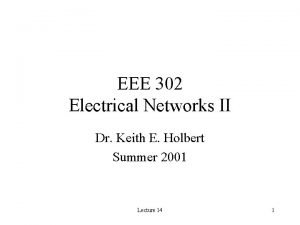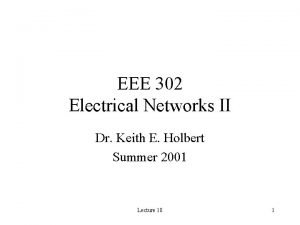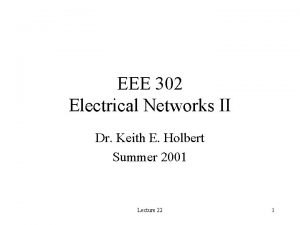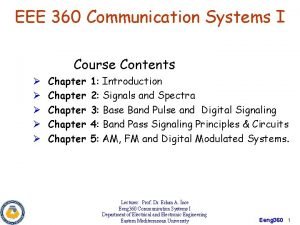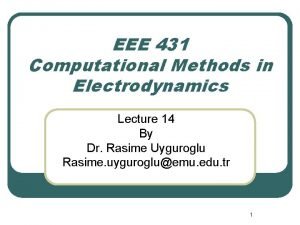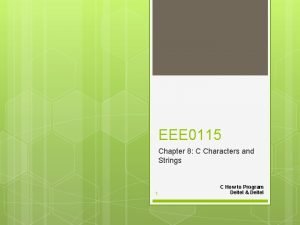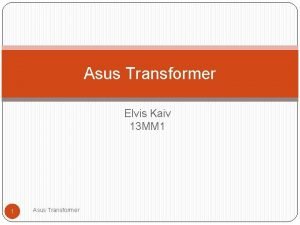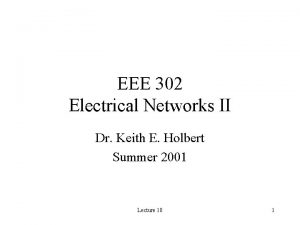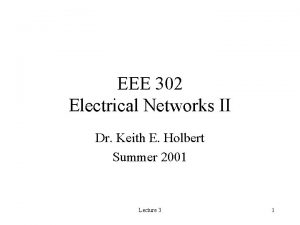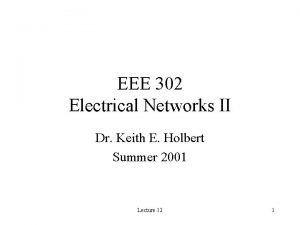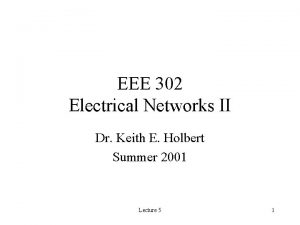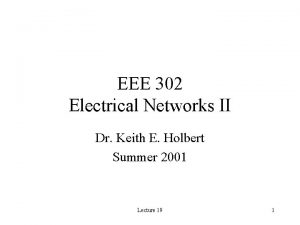EEE 302 Electrical Networks II Dr Keith E









- Slides: 9

EEE 302 Electrical Networks II Dr. Keith E. Holbert Summer 2001 Lecture 18 1

Complex Waveforms as Input • When complex waveforms are used as inputs to the circuit (for example, as a voltage source), then we (1) must Laplace transform the inputs (2) determine the transfer function (3) feed the input through the transfer function • The transfer function, H(s), is the ratio of some output variable to some input variable Lecture 18 2

Class Example • Extension Exercise E 14. 7 Lecture 18 3

Transfer Function • The transfer function, H(s), is • All initial conditions are zero (makes transformation step easy) • Can use transfer function to find output to an arbitrary input Y(s) = H(s) X(s) • The impulse response is the inverse Laplace transform of transfer function h(t) = L-1[H(s)] with knowledge of the transfer function or impulse response, we can find response of circuit to any input Lecture 18 4

Class Example • Extension Exercise E 14. 8 Lecture 18 5

Pole/Zero (Plot) • Poles directly indicate the system transient response characteristics; consider poles from a 2 nd order system: • For a pole-zero plot place "X" for poles and "0" for zeros using real-imaginary axes • Poles in the right half plane signify an unstable system Lecture 18 6

Class Example • Extension Exercise E 14. 9 Lecture 18 7

Steady State Response • Given an input of the form x(t)=XMcos(ω0 t+θ), the steady-state response is • where (j ) is the phase angle of the transfer function, that is, H(j ) Lecture 18 8

Class Example • Extension Exercise E 14. 10 Lecture 18 9
